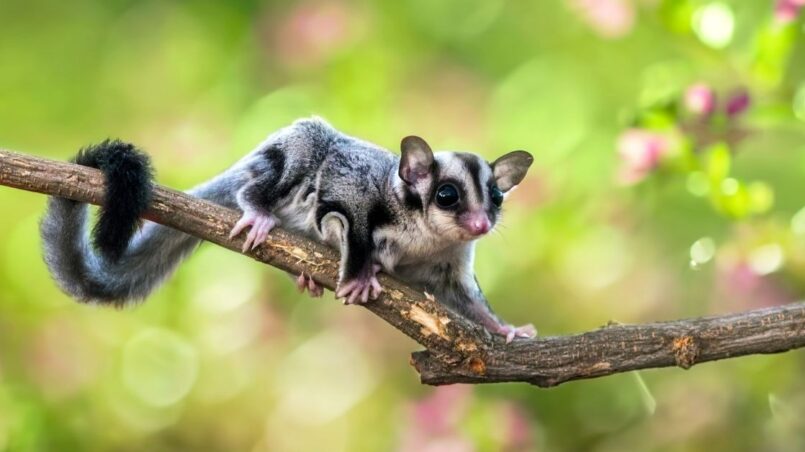Quick search
CTRL+K
Quick search
CTRL+K
Billy Morgan
Sugar gliders, with their big, expressive eyes and ability to glide through the air, have captured the hearts of exotic pet enthusiasts around the world. These small, marsupial wonders native to Australia, Papua New Guinea, and parts of Indonesia, are far more than just cute faces. Here are ten fascinating facts about sugar gliders that showcase their unique characteristics and behaviors.
Sugar gliders have a thin skin membrane called a patagium that stretches from their forelegs to their hindlegs. When extended, it allows them to glide through the air over distances of up to 150 feet (45 meters), a remarkable adaptation for avoiding predators and traversing the forest canopy.

These creatures are nocturnal, meaning they are most active during the night. During the day, they prefer to snuggle up in cozy nests or pouches, making them the perfect pet for those who are away at work during daylight hours.
As their name suggests, sugar gliders have a penchant for sweet foods. In the wild, their diet consists of tree sap, nectar, and fruits. However, pet sugar gliders require a balanced diet including proteins and vegetables to keep them healthy.
Sugar gliders communicate through a variety of sounds, from barking to hissing, to express their emotions or alert others of danger. They thrive in social groups and can suffer from loneliness if kept alone, highlighting the importance of companionship for their well-being.
This Little gliders can form deep bonds with their human caretakers. This process, known as bonding, is facilitated by spending time together and carrying them in a bonding pouch close to your body, allowing them to become accustomed to your scent.
The sugar glider’s tail is not prehensile, but it serves multiple purposes, including aiding in balance and steering during glides, and as a tool for carrying nesting material.
Despite their small size, sugar gliders can live up to 12-15 years in captivity when properly cared for, making them a long-term commitment as pets.
Unlike some pets, sugar gliders do not have control over their bladder and bowels, making potty training impossible. This is a crucial consideration for potential owners regarding pet care and cleanliness.
Sugar gliders use scent glands located on their forehead, chest, and at the base of their tail to mark their territory and members of their group. This behavior is more pronounced in males.
Before deciding to bring a sugar glider into your home, it’s important to check local laws and regulations as they are illegal or require special permits to own in some places due to their status as exotic pets.
They are truly remarkable creatures, offering a unique blend of companionship and intrigue. These facts only scratch the surface of what makes sugar gliders fascinating pets and companions. Whether you’re a current sugar glider owner or considering adopting one, understanding and appreciating these unique aspects of their nature can help foster a more enriching life together.
© All rights reserved. Made in Canada